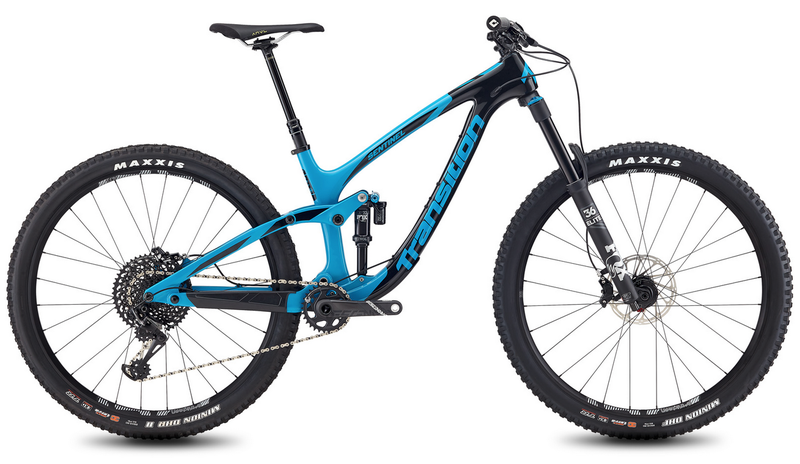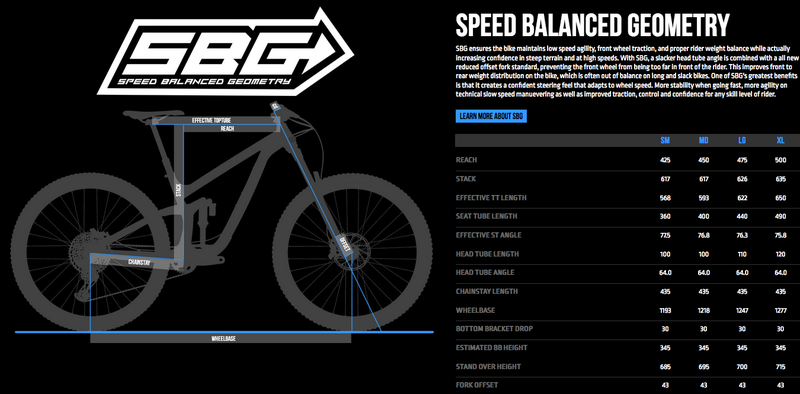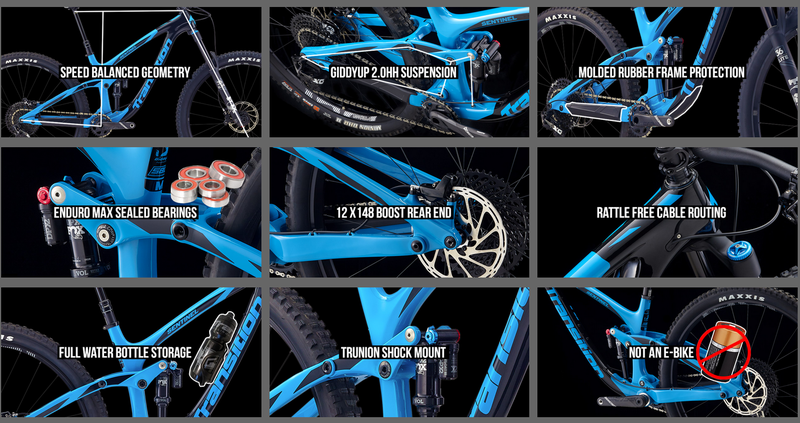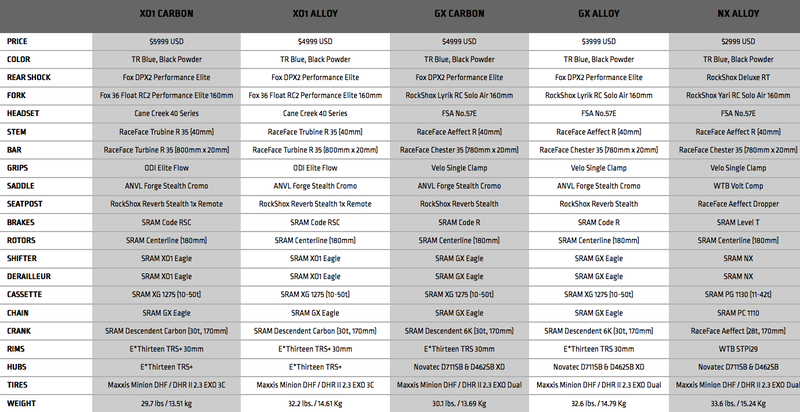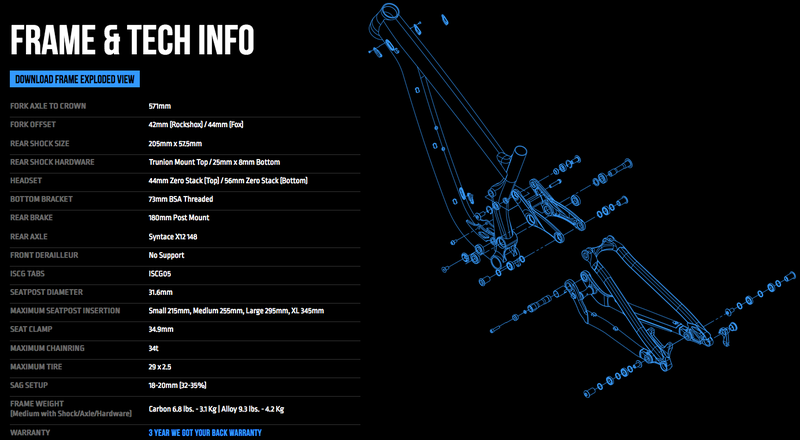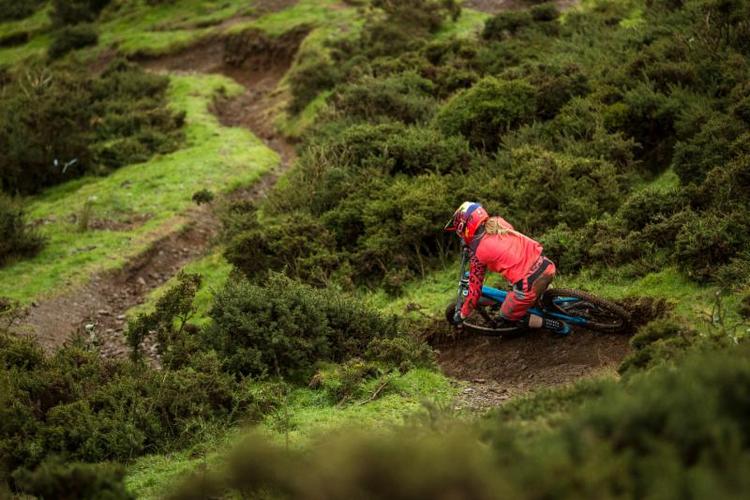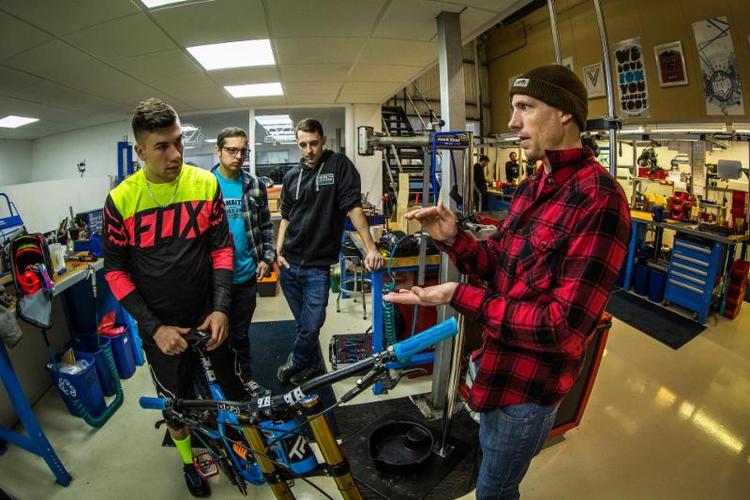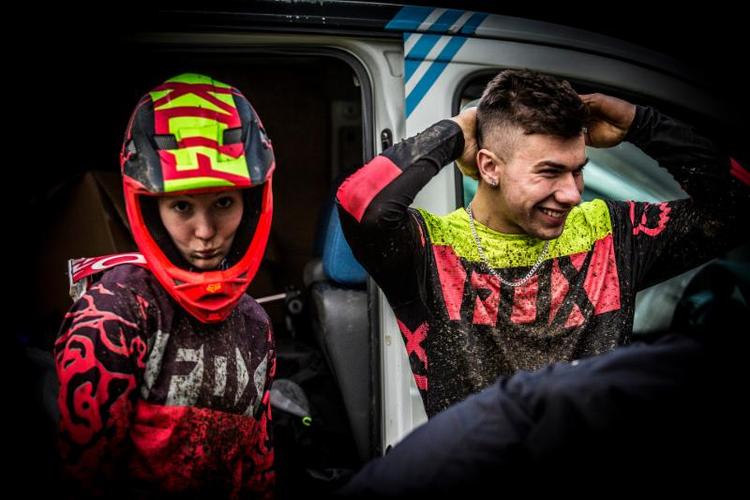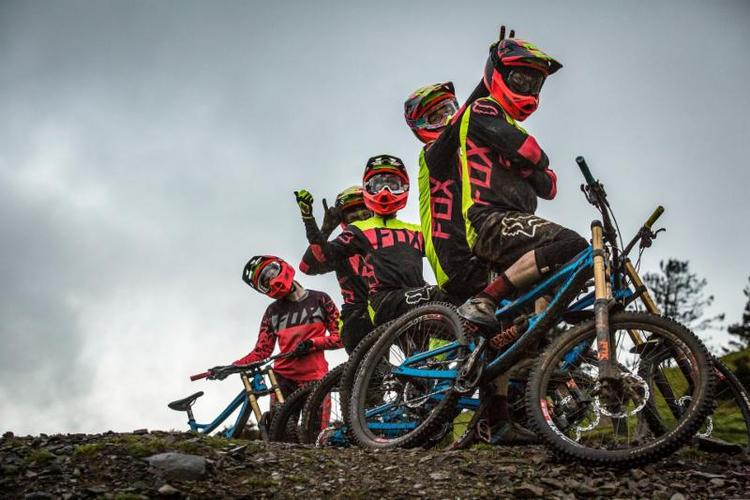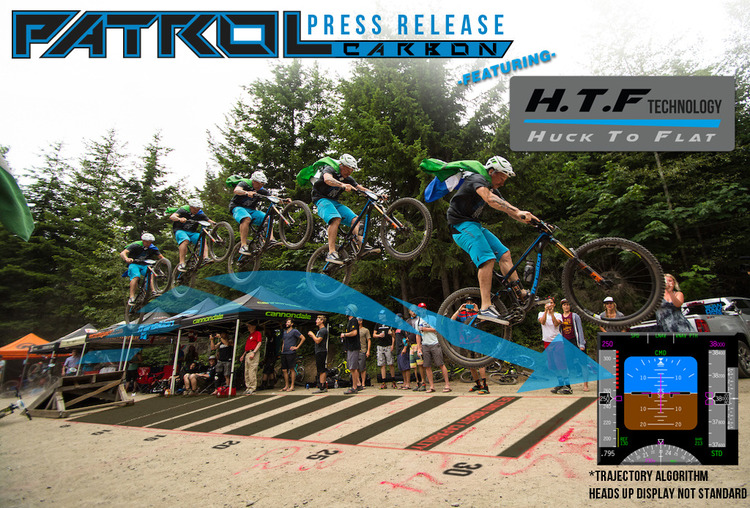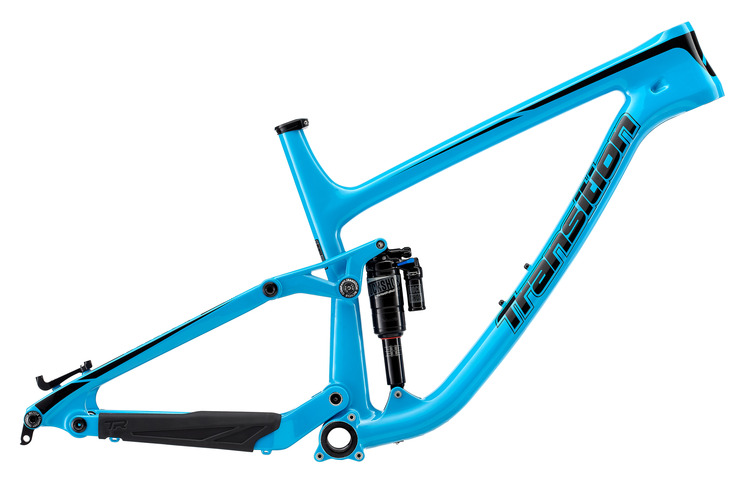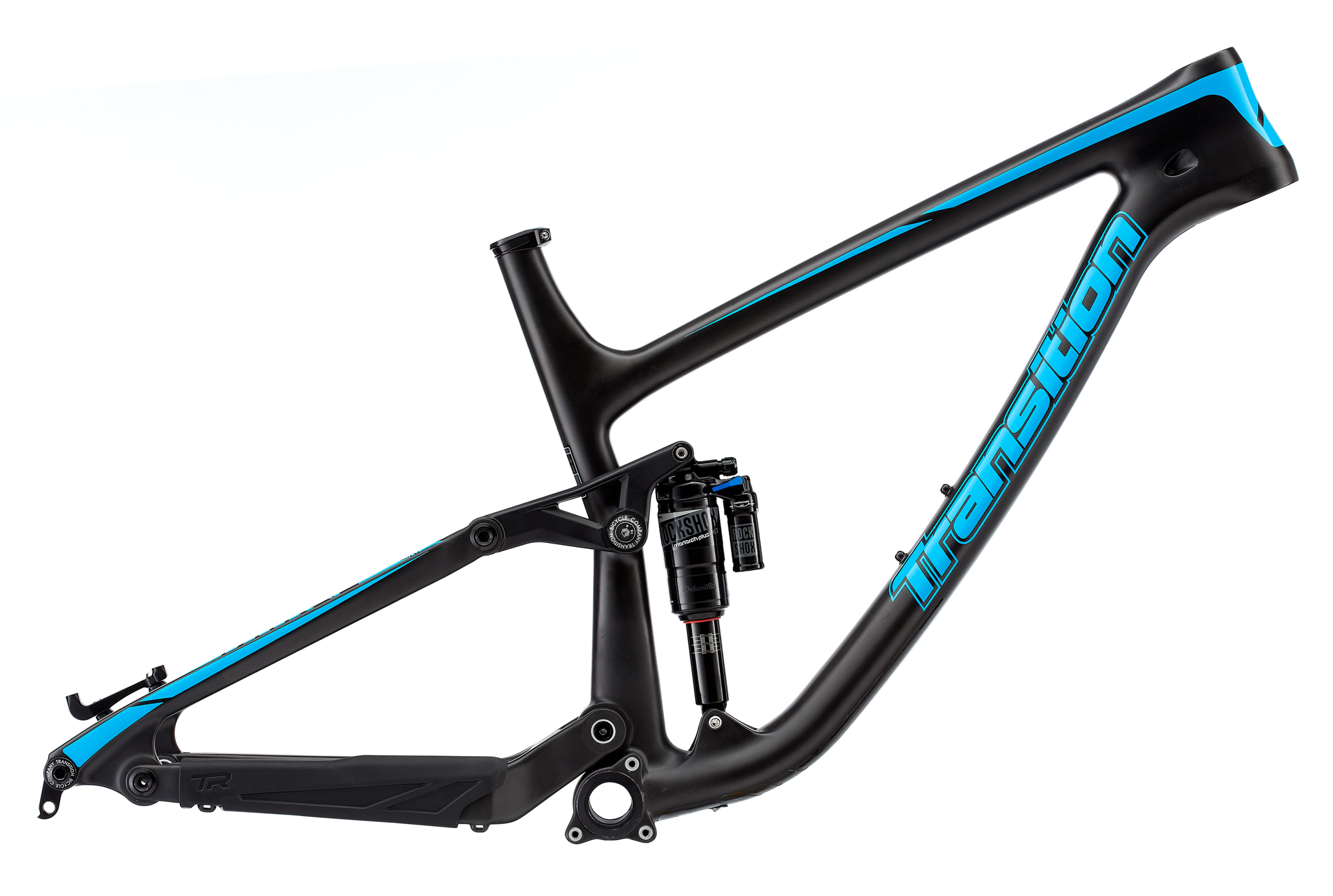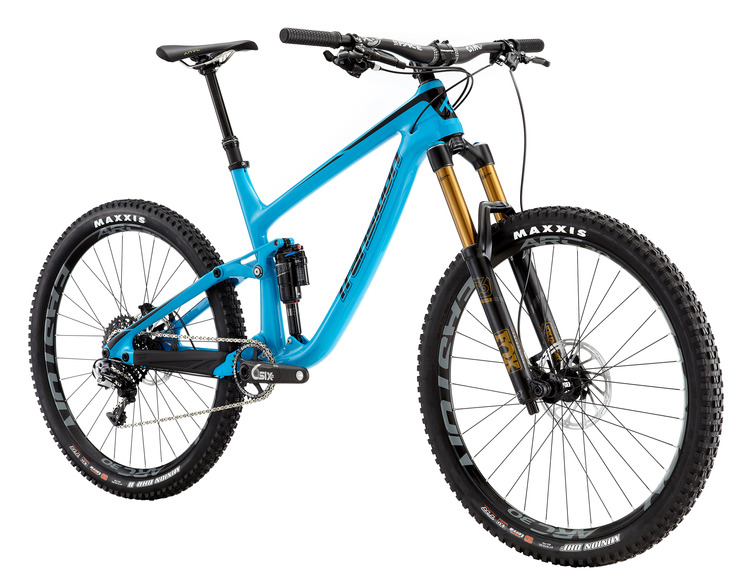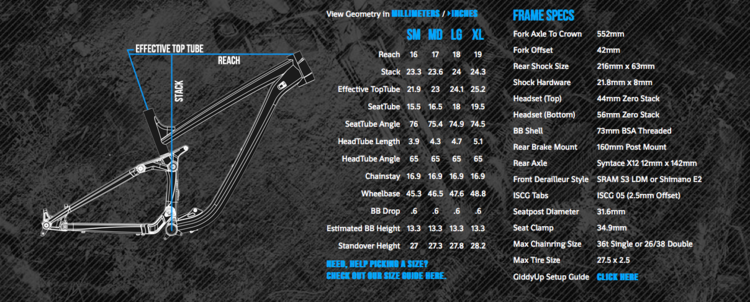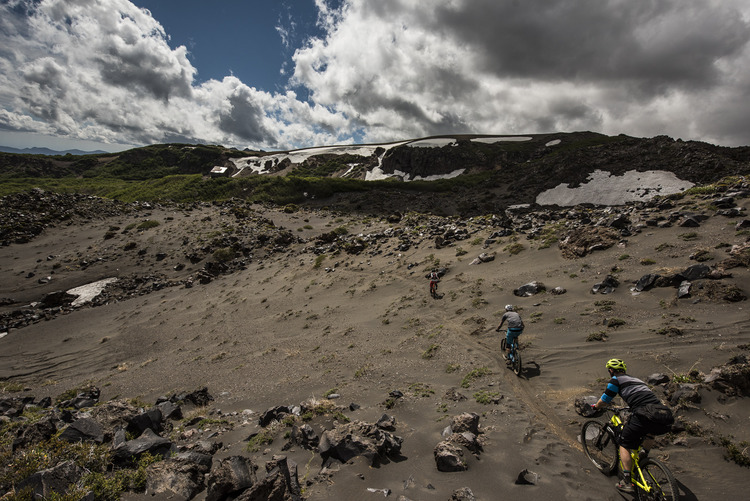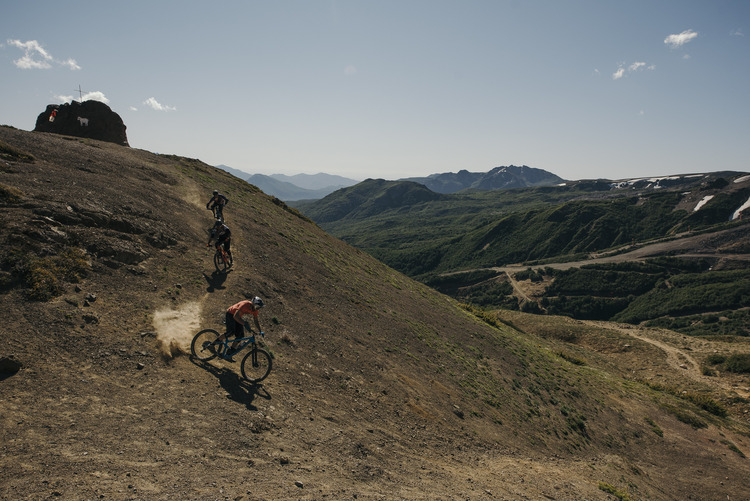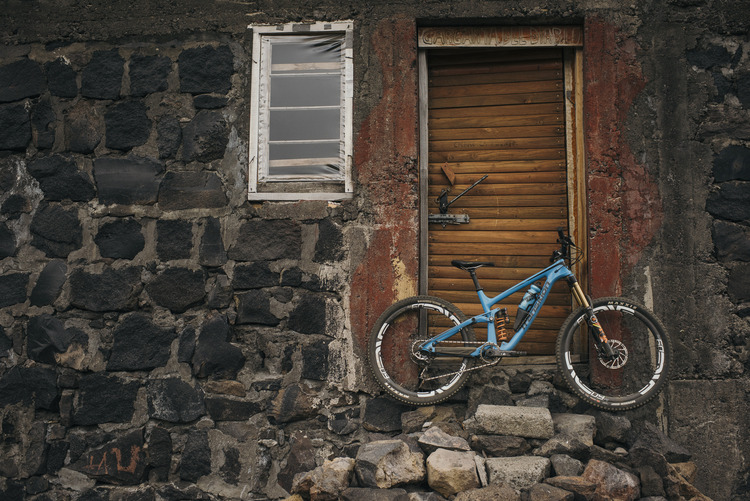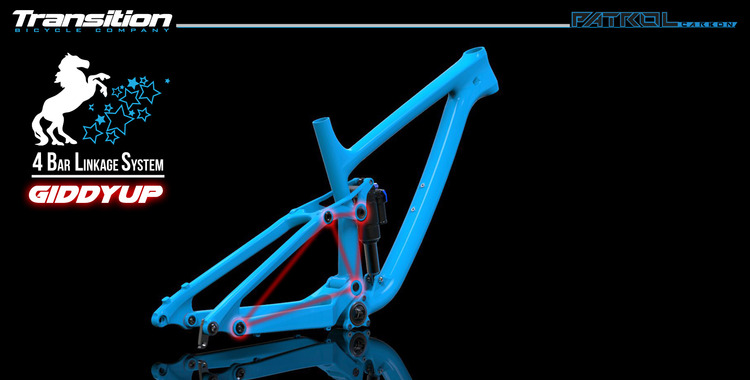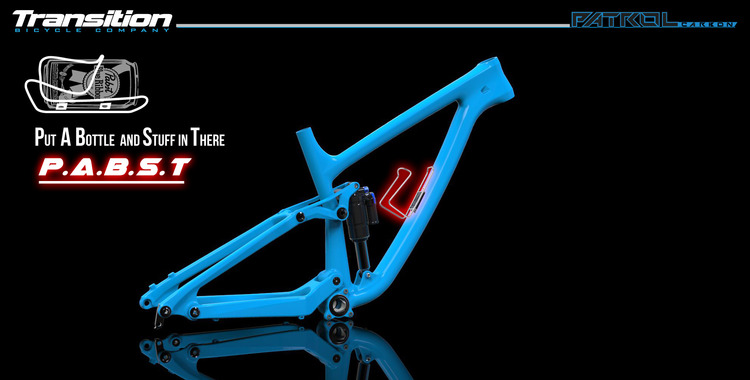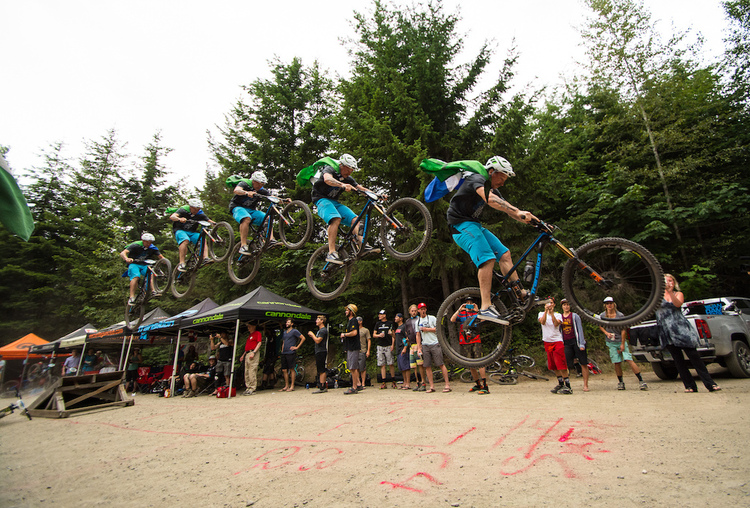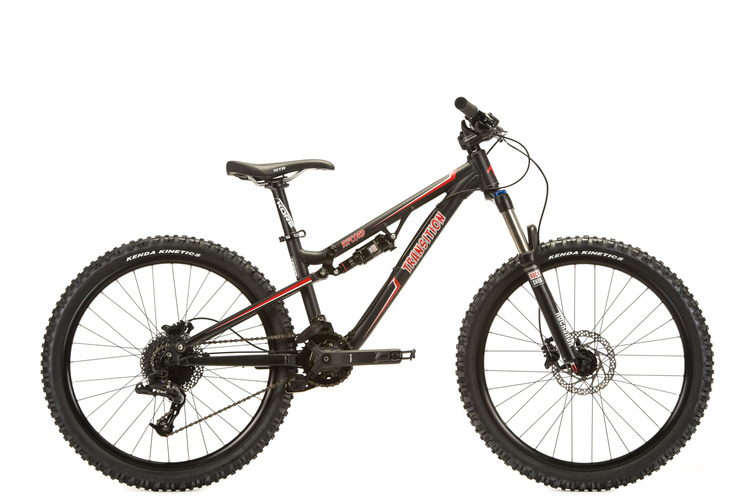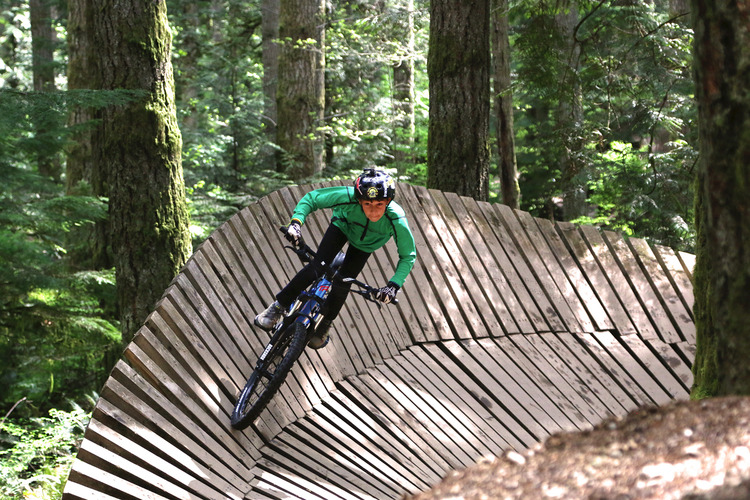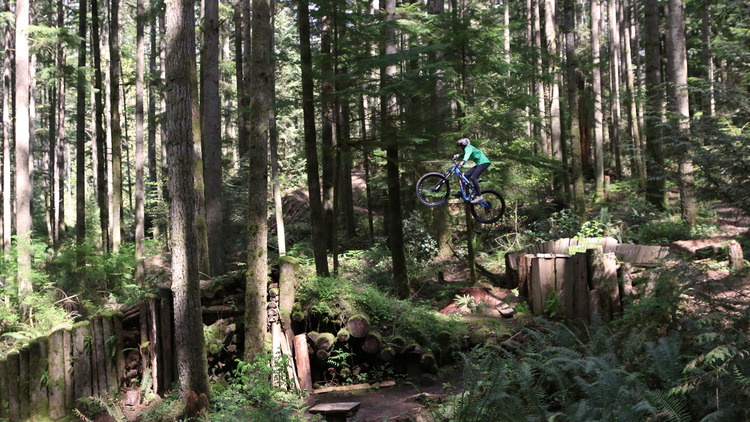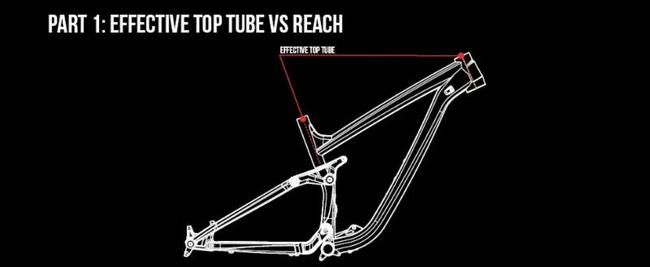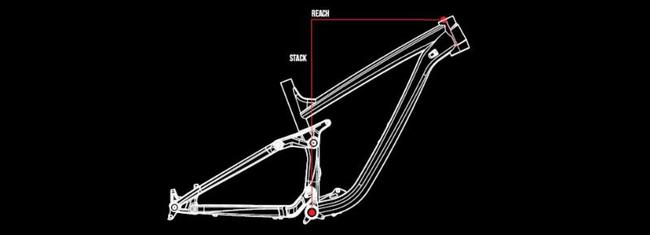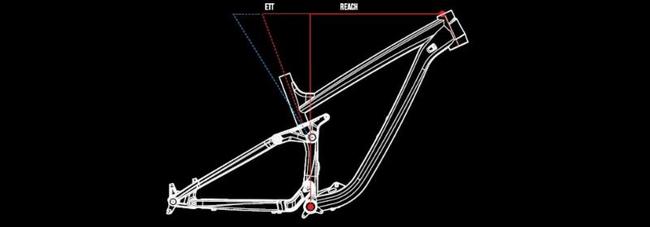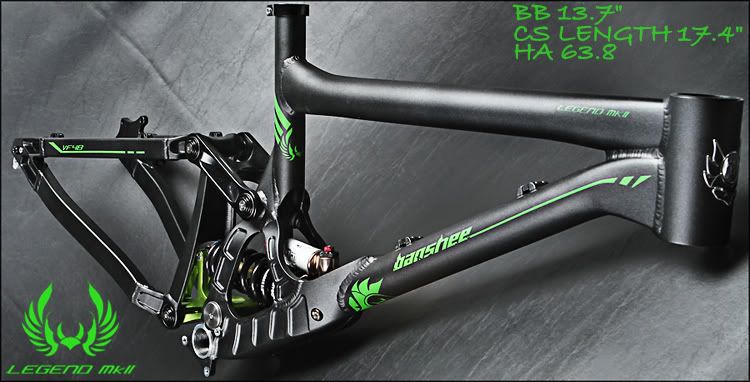Transition Announces The Carbon Sentinel Engineered To Party
 Thursday, December 28, 2017 at 9:20AM
Thursday, December 28, 2017 at 9:20AM For those of you who have been Sentimental over our new Sentinel but only ride carbon, the wait is over. Available in S, M, L and XL sizes and boasting all the same great features, hardware and parts kits as the alloy model. Coming in at a modest 6.83lbs / 3.1Kg this carbon beauty is a true rocketship. The Sentinel continues to receive praise as the bike that can truly do everything well. So if you like going up, over and down mountains the Sentinel is the bike for you. Available early 2018.
Transition Sentinal Geometry
The Sentinel was designed for 29er haters. A bike so capable, playful and fun that even the most staunch 29er naysayer will instantly convert. With our reverse mullet suspension configuration, the Sentinel stays responsive and playful while delivering incredible downhill monster truck capabilities. Our new Speed Balanced Geometry is our crown jewel that unlocks 100% of the potential of this bike. With SBG you get total confidence when it comes to cornering and climbing that really sets this bike apart from the crowd.
Transition Sentinel Features
Features
| ▪ | Carbon |
| ▪ | Speed Balanced Geometry |
| ▪ | Boost 148 Dropout Spacing |
| ▪ | Trunion Metric Shock Sizing - 205mm X 57.5mm |
| ▪ | Enduro Max Sealed Bearings |
| ▪ | Threaded Bottom Bracket |
| ▪ | Molded Rubber Downtube & Chainstay Protection |
| ▪ | New Rattle Free Internal Cable Port Covers |
| ▪ | External Rear Brake Routing |
| ▪ | 180mm Post Mount Brake |
| ▪ | Collet Main Pivot |
| ▪ | Water Bottle Storage Inside Front Triangle |
| ▪ | Tire Clearance up to 29" x 2.5" |
| ▪ | 6.83lbs / 3.1Kg Frame w/shock and hardware |
| ▪ | $2999 USA MSRP / Frameset |
| ▪ | $4999 USA MSRP / GX build |
| ▪ | $5999 USA MSRP / XO1 build |
Transition Sentinel Build Kits
Sentinel Frame Details
Transition Sentinel Video
When dreaming up what to shoot for the Sentinel, we couldn’t narrow it down to one style of riding, so we shot four locations/riders. All of which found the Sentinel to be right at home. Enjoy!
Music in order of appearance:
Odesza - Boy
Beastie Boys - Sabotage
The Geek X Vrv - Chinese Morning
The American Spirit - Sons and Daughters
Macklemore - Willy Wonka (Instrumental)
Find Out More About The Transition Sentinel Here
 29",
29",  Bikes,
Bikes,  EWS,
EWS,  Sentinel 29r,
Sentinel 29r,  Transition Bikes,
Transition Bikes,  Transition Sentinel,
Transition Sentinel,  Wagone Wheels |
Wagone Wheels |
TRANSITION BIKES and FMD Racing Development Join Forces to Create 'Transition Factory Racing'
 Thursday, January 28, 2016 at 3:26PM
Thursday, January 28, 2016 at 3:26PM "Having spent a good few days testing and having fun with Transition, it has been so refreshing to see how passionate and involved they are with our sport. I strongly believe that FMD and Transition are an amazing match and together can make big steps in the right direction. They are eager to help us develop as a team and do anything they can to help, which is such a positive feeling going into the season. Let the journey begin!"
- Tahnée Seagrave / Transition Factory Racing
"2011 was the last year a Transition Factory supported team competed in the World Cup circuit. And I am absolutely psyched to have these guys representing us and how our partnership has come together. From the first instant I spoke with Tony, it was apparent to me how parallel our motives and expectations were. Having just returned from a week in Wales working with the full team, I'm amazed and inspired by their passion for racing and all things related. It already feels like they're an extension of the Transition family.
Being able to work so closely with their mechanics on their race bikes and assure they have absolutely everything they need for success was invaluable. Working directly with the mechanics and athletes is as streamlined as it gets. There are so many nuances involved with equipment and race-craft at this level, and being able to tap into my racing and inner bike geek eliminates all communication barriers as we're speaking the same language. I have no doubt it is going to be an exciting year and I can't wait to see what they're going to do on the TR500!"- Lars Sternberg / Transition Bikes
"For the first time in FMD Racing's history, we have been able to work closely with our main sponsor - Myself, the mechanics & riders have just had Lars spend a week at 'FMD Towers'. He was able to visit MoJo whilst the mechanics and riders were setting up their TR500's with their new Fox suspension and was also on hand to advise and assist at testing the following day... Lars' input has been, and will continue to be, invaluable. We also found out he sucks at karting!
We are so stoked to be part of the Transition family - the whole FMD team wanted to partner with a company that believes in what we are doing and where we are going. After speaking to several companies, there was one company who's enthusiasm stood out, a mutual respect followed and a new 'bromance' was formed. This partnership allows us to continue our development of young riders so we can ensure there is a proper structure that gives the correct support and opportunities.
Tahnée tested several bikes at the end of 2015 and the Transition TR500 - straight out the box - was the only one that instantly had her grinning. I will not say "the bike is faster, the company is awesome" like everyone else but what I will say is that the riders love the bike and the company is full of people that truly love to ride bikes - all bikes. This love gives them the ability to build the bikes everyone wants to ride.
The 'stoke' factor is mutual and long may it continue!." - Tony Seagrave / Transition Factory Racing
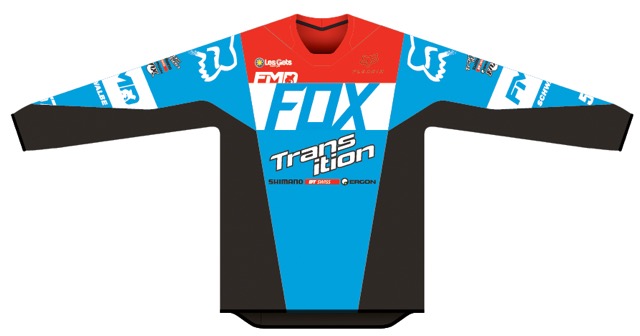
Continuing FMD's development heritage the team consists of two programs; World Cup and Development. Tahnée Seagrave and Neil Stewart make up the Transition Factory World Cup Racing roster. While Kaos Seagrave, Joe Parfitt and Jamie Edmonson comprise the Transition / FMD Development Racing roster.
2016 Transition Factory Racing & Transition / FMD Schedule
- 02-03 April - BDS Round 1: Ae Forest, Scotland
- 9-10 April - WC Round 1: Lourdes, France
- 20-24 April - WC Round 2: Cairns, Australia
- 14-15 May - BDS Round 2: Fort William, Scotland
- 28-29 May - BDS Round 3: Rhyd-Y-Felin, Wales
- 4-5 June - WC Round 3: Fort William, Scotland
- 11-12 June - WC Round 4: Leogang, Austria
- 15-19 June - CrankWorx Europe: Les Gets, France
- 25-26 June - BDS Round 4: Moelfre, Wales
- 9-10 July - WC Round 5: Lenzerheide, Switzerland
- 6-7 August - WC Round 6: Mont Sainte Anne, Canada
- 27-28 August - BDS Round 5: Revolution Bike Park, Wales
- 3-4 September - WC Round 7: Vallnord, Andorra
- 17-18 September - BDS Round 6: Llangollen, Wales
Transition Factory Racing supported by
- FoxHead Europe
- Shimano Pro/Saint/Zee
- DT Swiss
- Ergon
- Schwalbe Tires
- Crank Brothers
- Fox Suspension
- More to be confirmed...
Carbon Patrol Press Release
 Monday, December 21, 2015 at 6:08AM
Monday, December 21, 2015 at 6:08AM A new generation of Giddy Up bikes has emerged. The all new Carbon Patrol takes the award winning alloy Patrol suspension and geo and goes full carbon. Weight savings, new features and feel on the trail make the Patrol Carbon one of the most exciting bikes Transition has ever created.
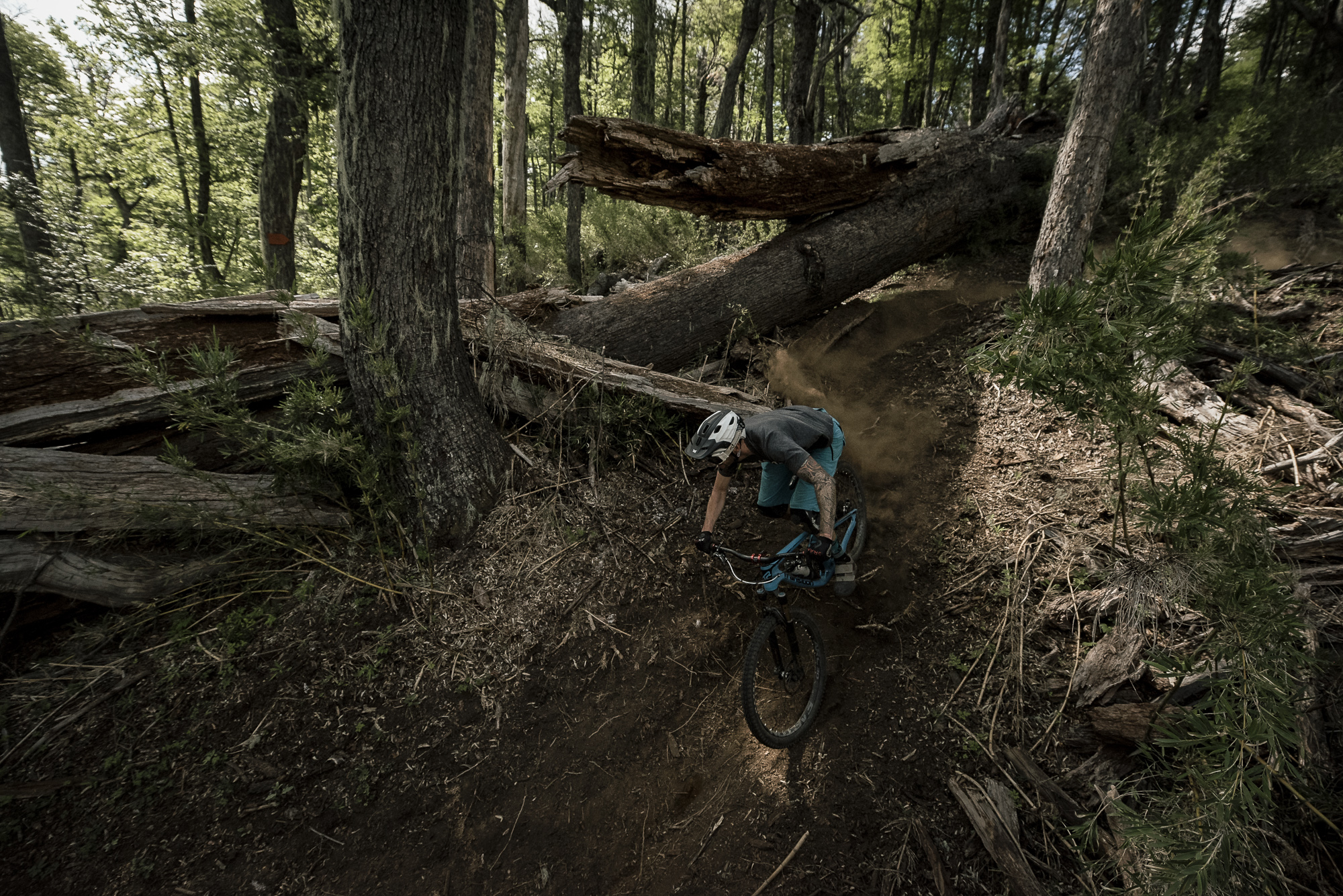
The Patrol Carbon is the highly anticipated premium option to our well regarded aluminum Patrol. All the great features of the aluminum Patrol with a large reduction in weight and no compromise in strength. The carbon front triangle, seatstays and chainstays provide a crisp and responsive ride with excellent trail feel. Featuring all the same geometry and GiddyUp suspension the Patrol Carbon is even more capable up and down mountains. The fully guided internal cable routing for rear brake, derailleur and seatpost are easy to use and rattle free. The collet main pivot keeps the rear end stiff and the threaded bottom bracket is a mechanics dream. With around a 600 gram weight savings over the aluminum Patrol the Patrol Carbon climbs like an E-bike, and descends like a downhill bike.
- Progressive Geometry - Long, Low and Slack
- Giddy Up Link Suspension, 155mm Rear and 160mm Front
- Integrated Rubber Chainstay Protection
- Collet Style Main Pivot Hardware
- ISCG05 Chainguide Mounting
- Syntace X12 Rear 142mm Axle and Universal Transition Derailleur Hanger
- Full Size Water Bottle Fits Inside Front Triangle
- User Friendly 73mm Threaded Bottom Bracket
- Tubes Inside Tubes Internal Cable Routing for Easy Setup
- Medium Frame Weight With Rear Shock: 6.5 lbs.
Design Features
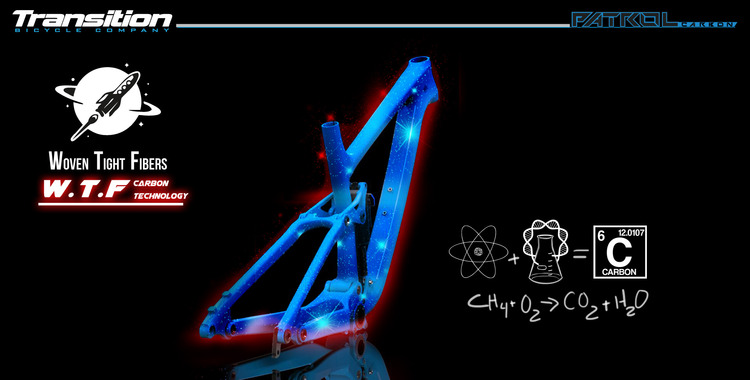 The W.T.F. process used on the Patrol Carbon utilizes the highest grade carbon materials and EPS molding process, providing increas ed stiffness and strength at one of the most competitive weights in it's class.
The W.T.F. process used on the Patrol Carbon utilizes the highest grade carbon materials and EPS molding process, providing increas ed stiffness and strength at one of the most competitive weights in it's class.
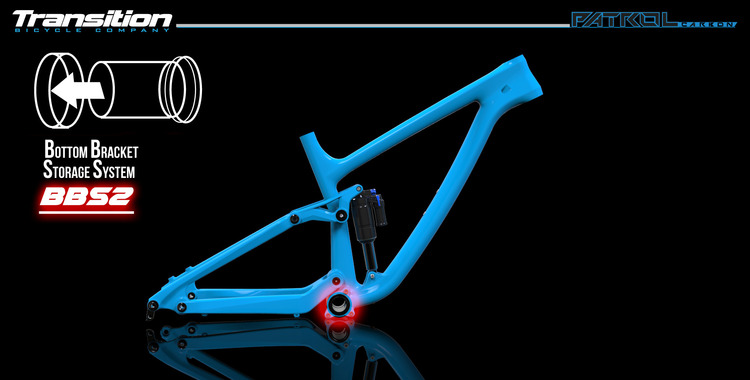 The BBS2 system utilizes a standard Euro threaded 73mm bb shell for ease of BB compatibility, installation and maintenance. Euro threaded BB shells are creak free and the most common industry-wide shell standard.
The BBS2 system utilizes a standard Euro threaded 73mm bb shell for ease of BB compatibility, installation and maintenance. Euro threaded BB shells are creak free and the most common industry-wide shell standard.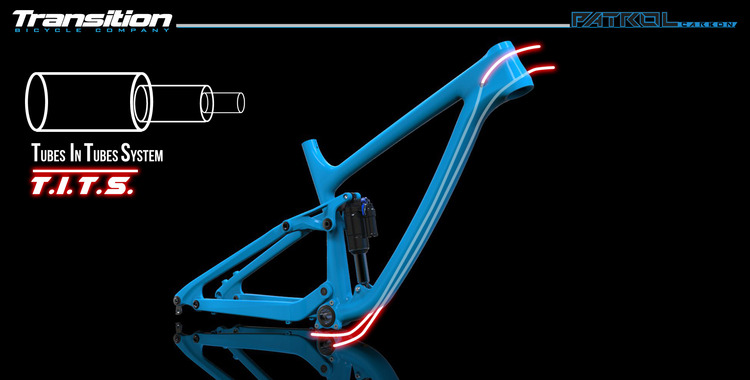 The T.I.T.S. internally guided cable system ensures a rattle-free ride, ease of assembly and maintenance. The fully guided tubes eliminate the need for fishing cables when routing brake, derailleur and seatpost cables.
The T.I.T.S. internally guided cable system ensures a rattle-free ride, ease of assembly and maintenance. The fully guided tubes eliminate the need for fishing cables when routing brake, derailleur and seatpost cables.
 155mm,
155mm,  Carbon Patrol,
Carbon Patrol,  Enduro,
Enduro,  Transition Bikes,
Transition Bikes,  Transition Patrol |
Transition Patrol |
Transition Bikes Announces It's Very First Kids Bike, The Ripcord
 Thursday, May 7, 2015 at 6:27AM
Thursday, May 7, 2015 at 6:27AM 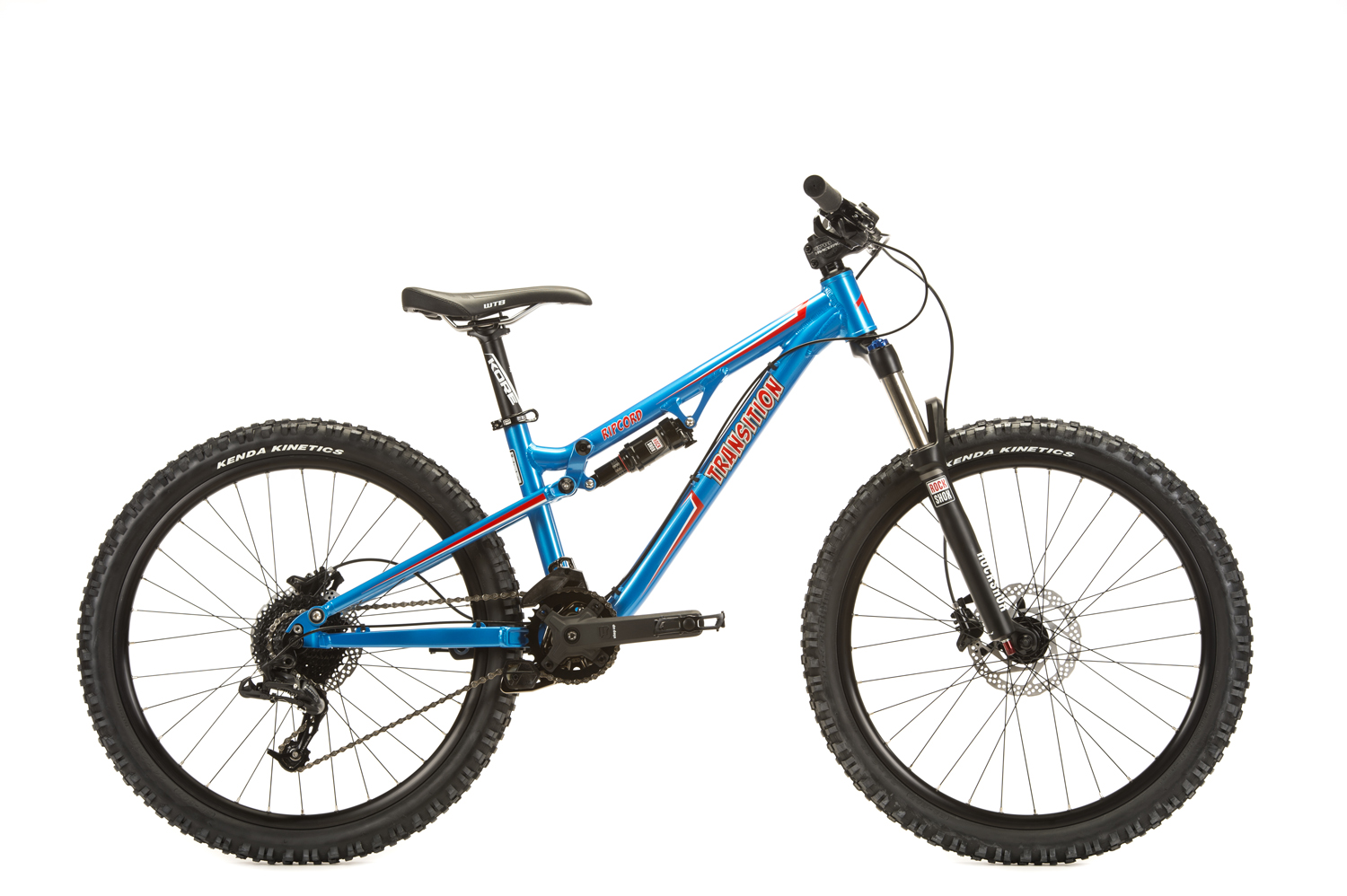
The folks at Transition Bikes are at it again trying to get your hard earned money from you. This time in the form of a kids do-it-all shredder bike that helps small persons progress to new levels. This video features the all new 24" wheeled full suspension kids bike the Ripcord and features father and son duo Doug and Carter Russell showing you why you should never compromise with your equipment.
 Kid's MTB,
Kid's MTB,  Transition Bikes,
Transition Bikes,  Transition Ripcord |
Transition Ripcord |
Modern Mountain Bike Geometry By Transition Bikes
 Wednesday, January 14, 2015 at 3:11PM
Wednesday, January 14, 2015 at 3:11PM Bike geometry can be complicated. It's nearly impossible to know everything about how a bike will ride based on looking at these numbers alone (not to mention these numbers tell you nothing about how the suspension itself will function). But we hear it being done all too often - and to be fair, we do it too. Problems arise when riders focus on just a few of these numbers instead of how they all relate to one another.
There are no right answers here. We're opinionated about this stuff and we'll let you know it. In the end, there are preferences and our hope is that this article provides the grounds for a more informed discussion of bike geometry. We're going to keep it pretty basic, and some of you might find a lot of the topic a little too 101. But we frequently come across pretty educated riders who haven't fully considered some of this stuff. Even in the basics you might come across a few new ideas. We hope it makes you think more about all of the details in your bikes geometry - we think about it a lot.
We'll begin with a topic that we see people confused about all the time....
Effective Top Tube (ETT) is a traditional way to measure a bikes length. It measures a horizontal line, parallel to the ground, from the center of the head tube to the intersection with the seat tube or seat post. This number is useful for identifying how long a bike will feel while in a seated position.
Reach is newer way to measure a bikes length. It uses the same horizontal line as the Effective Top Tube, but instead of measuring from the head tube to the seat post, it measures from the head tube to a vertical line that runs perpendicular through the center of the bottom bracket shell to the ground. This measurement identifies how long a bike will feel while standing.
So Reach measures your cockpit anytime you're standing and Effective Top Tube measures your cockpit only while seated with your saddle at a specific height. They're both telling numbers and it's worth considering them together, but we put a lot of emphasis on Reach these days. Any time we're riding aggressively, we're out of the saddle, so it follows that this number is going to have a greater overall impact on the "handling" characteristics that define the modern trail or all mountain rider.
One of the most common problems we see is over-emphasis on Effective Top Tube length. As a whole, bikes tend to be getting longer front ends these days. But that can be done with a longer ETT, a longer reach, or a combination of both. Riders who look only at Effective Top Tube without considering reach may be selling themselves short, literally. That's because seat angle has a huge effect on ETT, but zero effect on Reach. Watch what happens when we make the seat angle slacker:
The Effective Top Tube is now longer, but the Reach has remained the same. Or to look at that in another way, it's not hard to imagine a scenario where the Effective Top Tube of 'Bike A' is the same as 'Bike B', but the Reach of 'Bike A' is actually shorter than 'Bike B' because 'Bike A' has a slacker seat angle. This happens; a lot. In these cases, Bike A may fit great while seated, but while standing, the cockpit length is too short and the rider doesn't have enough room to move around or find the bikes sweet spot.
The slack seat angle that afforded the rider adequate seated top tube length does nothing to help the rider move around on the bike while in a standing position. It has other effects as well. The riders seated weight will be further over the bikes rear axle, making the rider work harder to keep the front wheel on the ground while climbing and harder to effectively transfer power to the cranks. The taller the rider/seat post, the more dramatic this effect will be because the seat itself keeps moving rearward as the saddle height is raised. So rather than slacken the seat angle to increase a bikes Effective Top Tube, why not increase the Reach? Proper position while seated and standing.
Another problem with ETT as a whole is that, because it's influenced by seat angle, the actual feel that a listed ETT provides will vary from one rider to the next depending on how high they run their saddle, even on the same frame. Reach is more constant. Consider a rider who is 6' with two bikes; both bikes have a listed ETT of 610mm, but they have different seat angles. ETT is always measured in a parallel line to the ground starting at the top of the head tube. Now let's assume this riders actual seat height is 5" above where the ETT is measured. The bike with a slacker seat angle will actually feel longer while seated than the bike with the steeper seat angle, even though
they have the same effective top tube on paper. So saying that you prefer a bike to have a particular ETT isn't really considering all the necessary information.
Longer Reach also means that the measurement from the BB to the front axle will be longer.
Let's assume that you take a frame and increase the Reach by 25mm. The distance from the BB to the front axle will grow as a result and you now have a bike with a longer wheelbase. You can now shorten the bikes chainstay length to get the wheelbase back to where we started. Same overall footprint, just with more bike out in front and less in the back. Same stability at speed, but a lot easier to push the rear end around in corners and get the front wheel off the ground when you want to. Decreasing the chainstay without increasing the reach would shorten the wheelbase, potentially sacrificing stability at speed. And a slack seat angle combined with the shorter chainstay is going to shift rider weight even further over the rear axle.
With a longer reach dimension, riders can run a shorter stem while still having enough room in the cockpit, whether seated or standing. Short stems provide stability, which is a good thing when you're hanging on for dear life down a high-speed singletrack descent or pointing it through a technical section of trail. When climbing, your tire is less likely to get knocked off line by a root or ledge in the trail. We're going to make a blanket statement here that's intended to offend plenty of people...anyone who doesn't consider themselves a purely XC rider shouldn't be running a stem over 60mm on a mountain bike. That's being generous too. Really we think that max stem length
should be closer to 55mm, maybe even 50mm, but we'll leave some wiggle room in there.
We see people defying this rule regularly - probably because their bike's reach is too short so they put on a longer stem to provide enough room to move around. Or because their bike came spec'ed with a 90mm out of the box and they never changed it.





